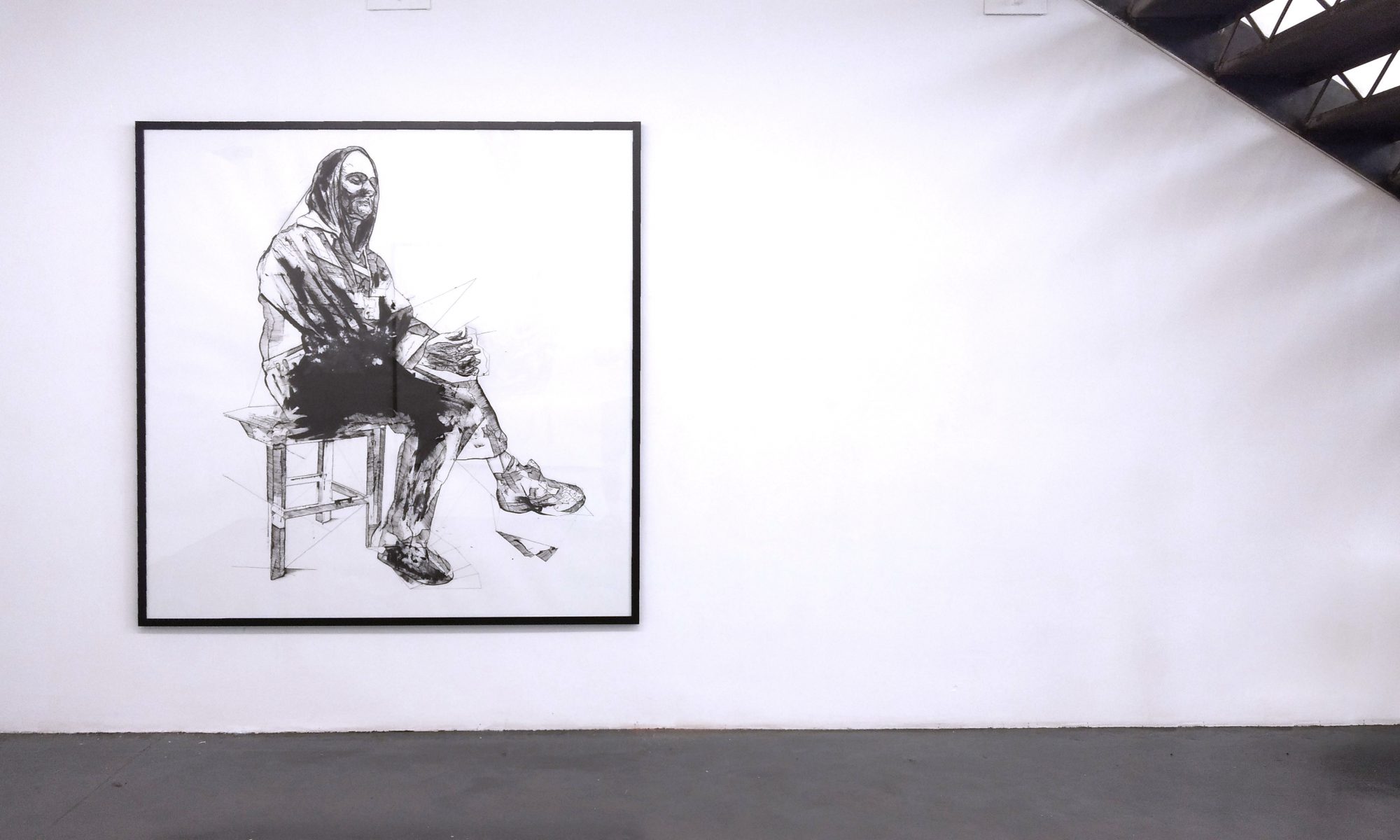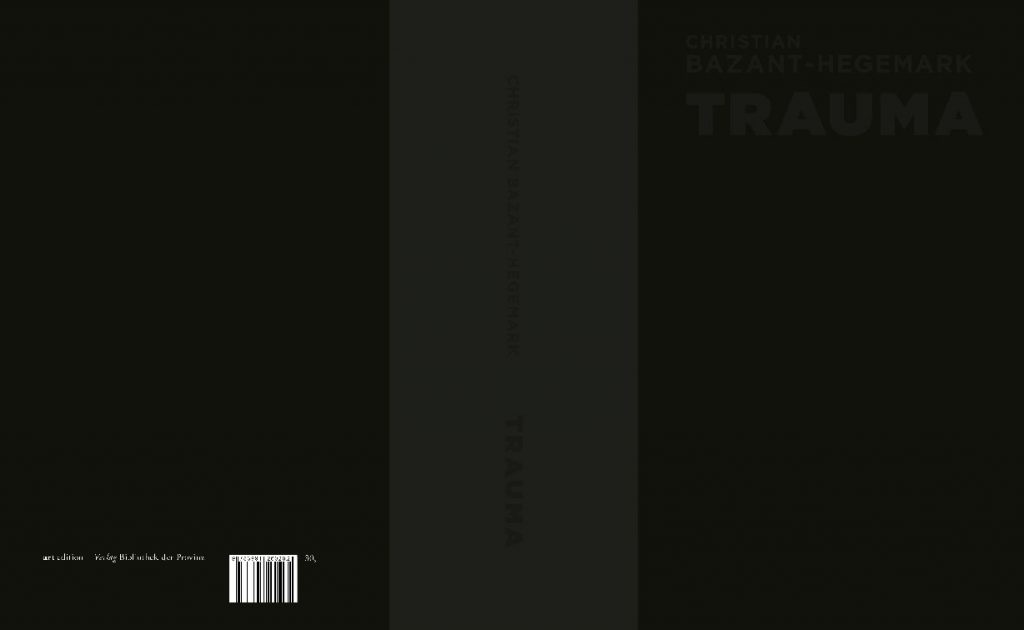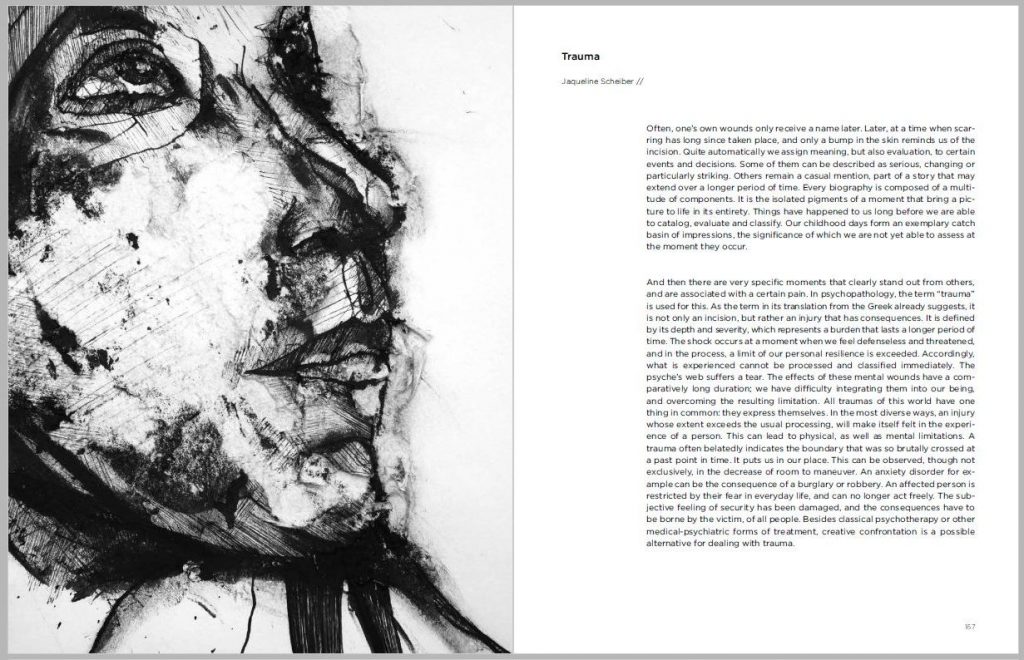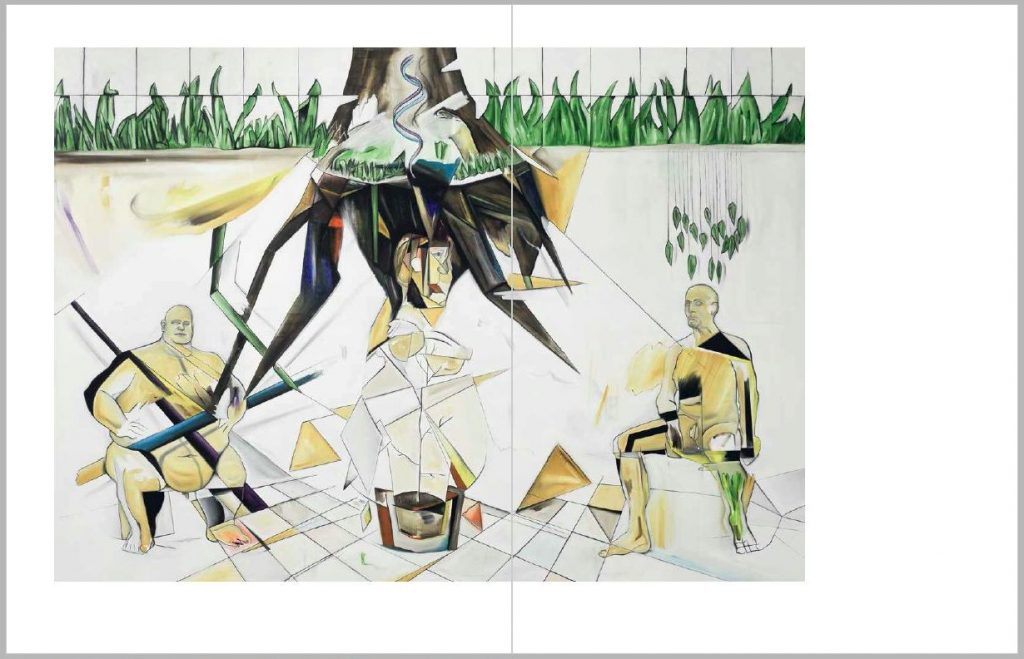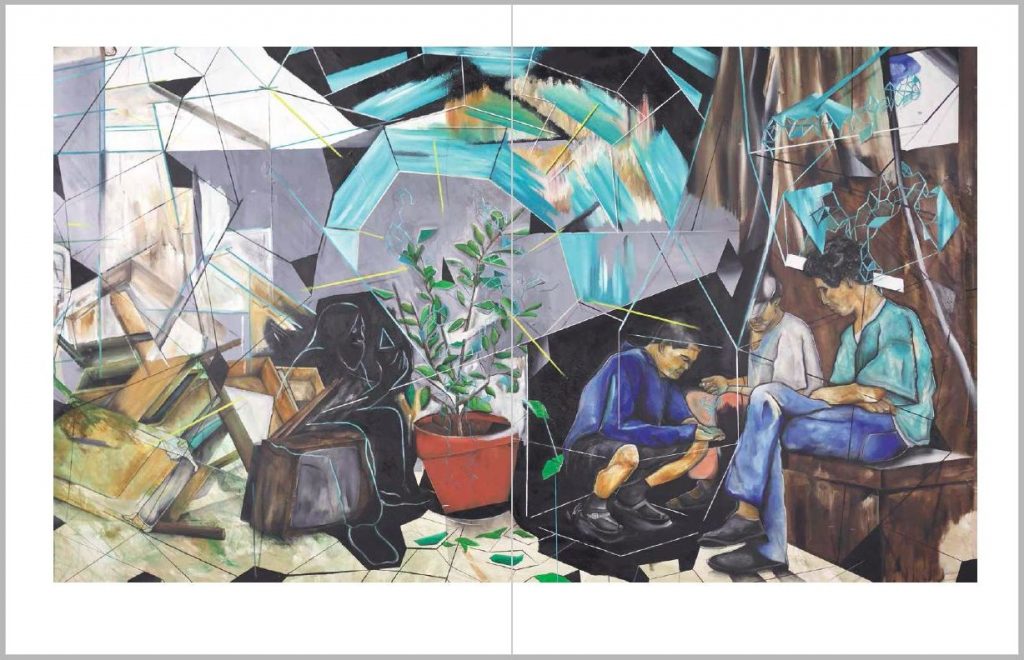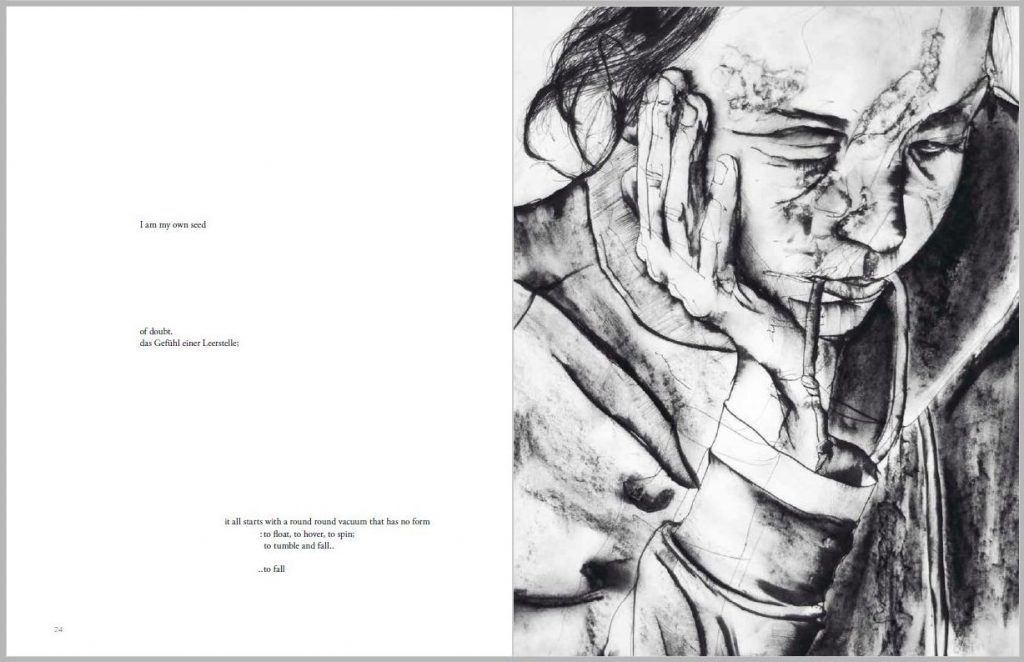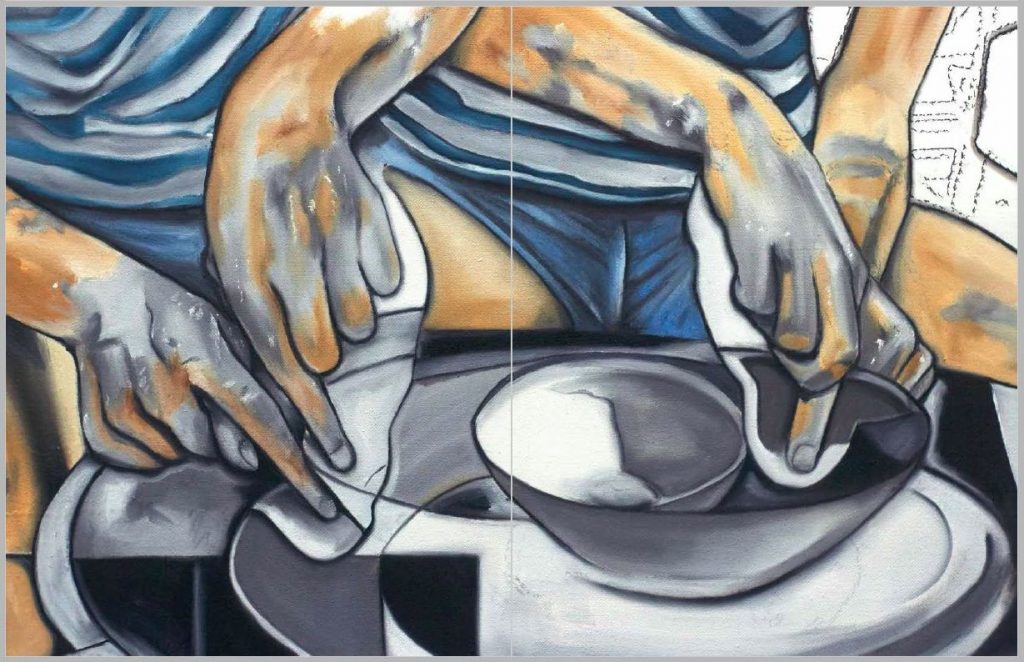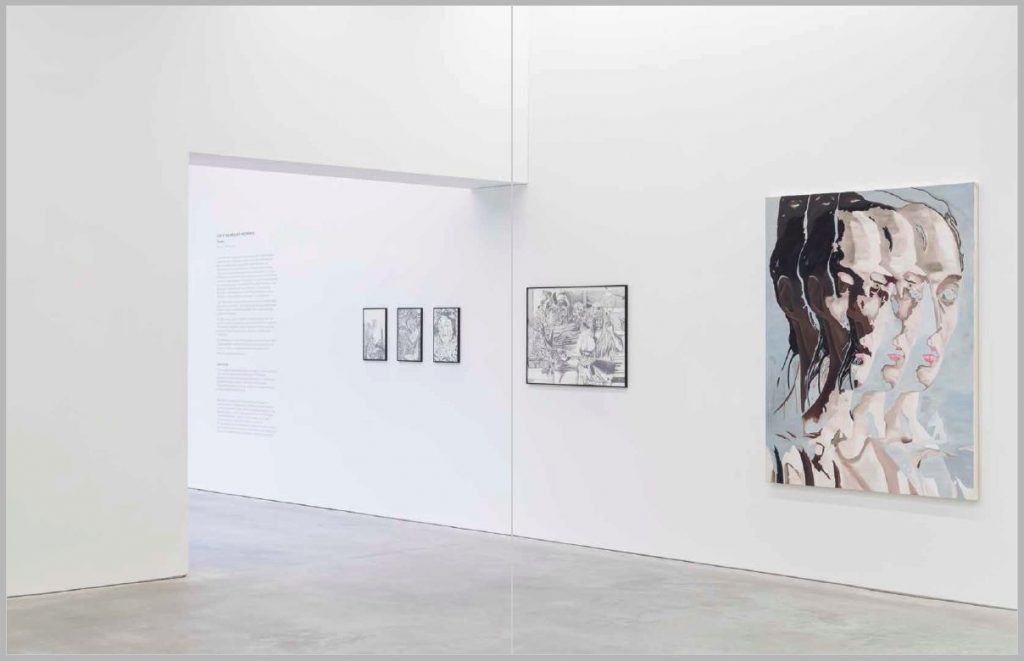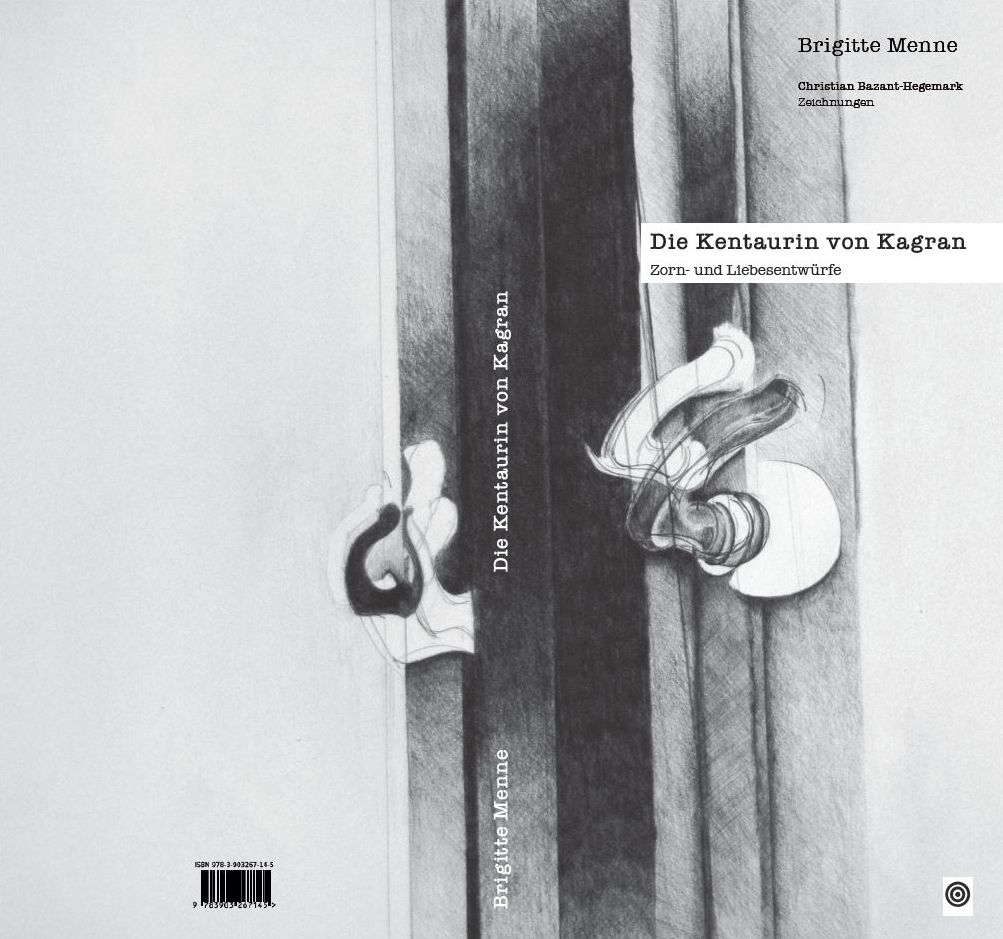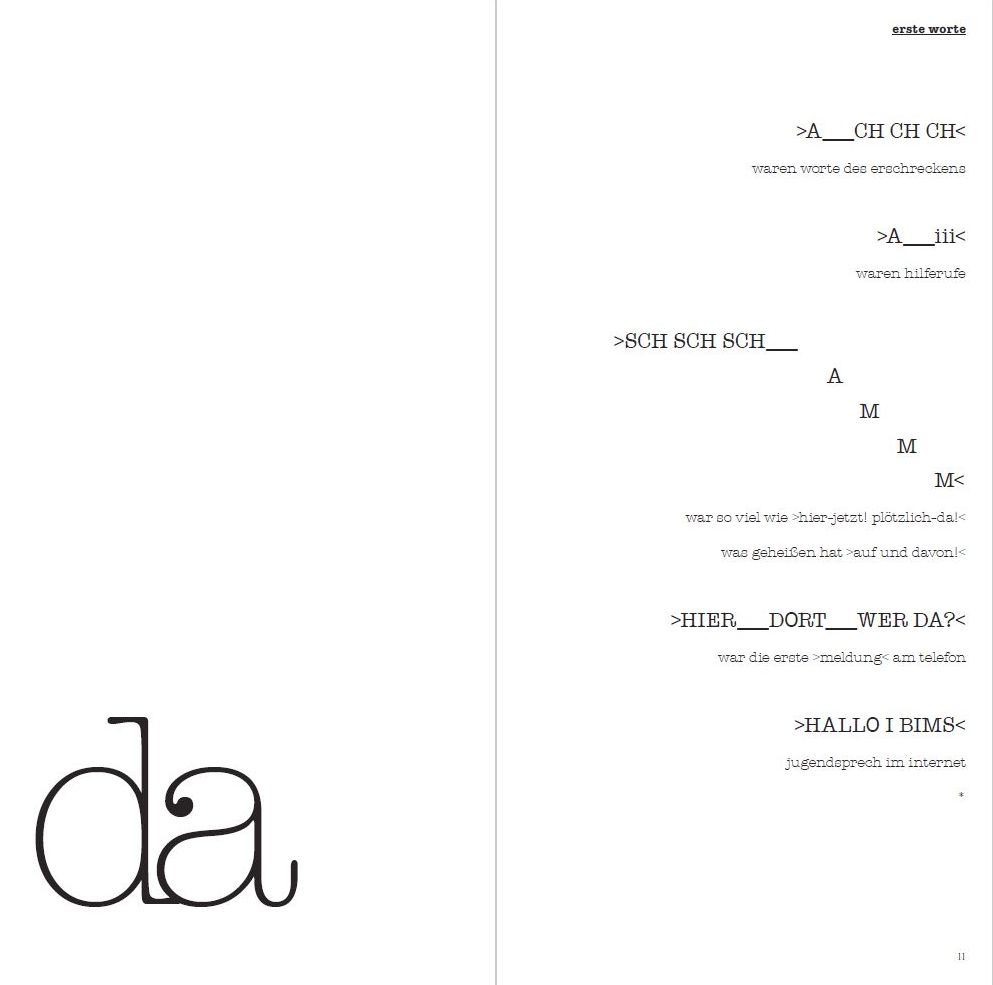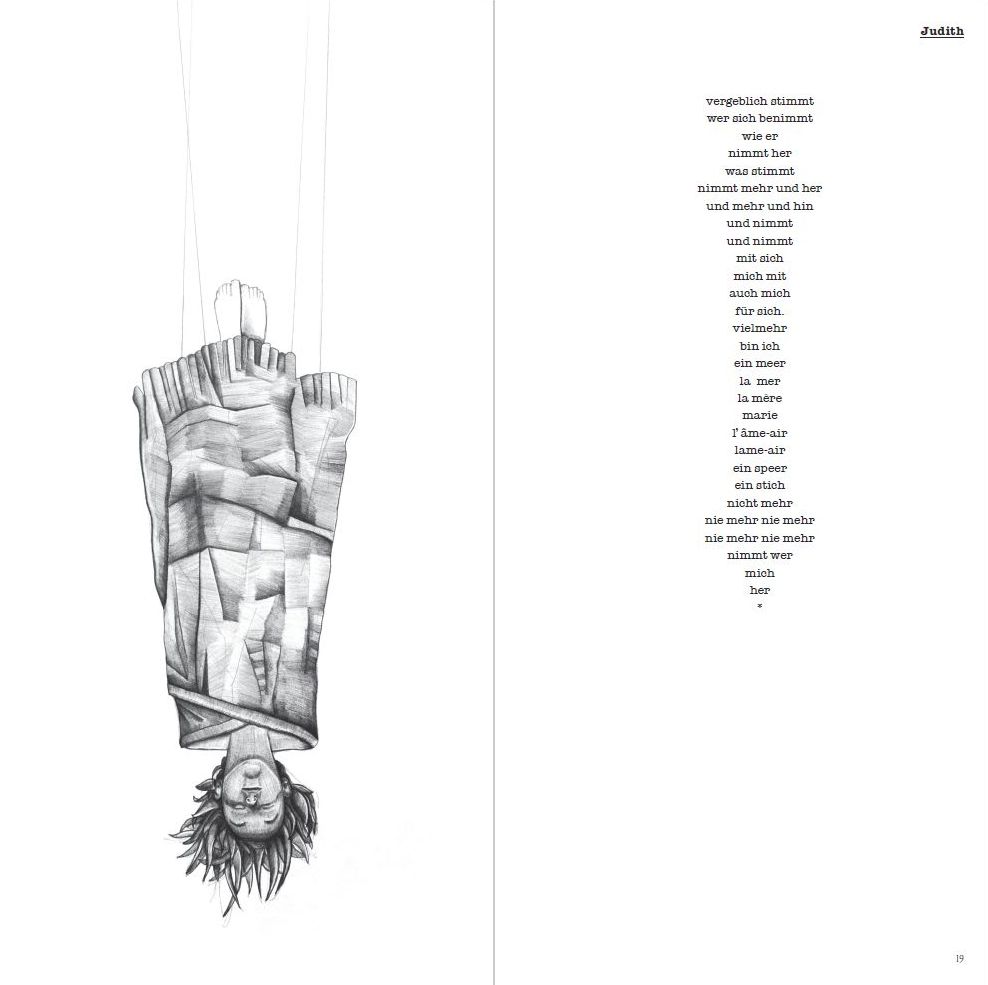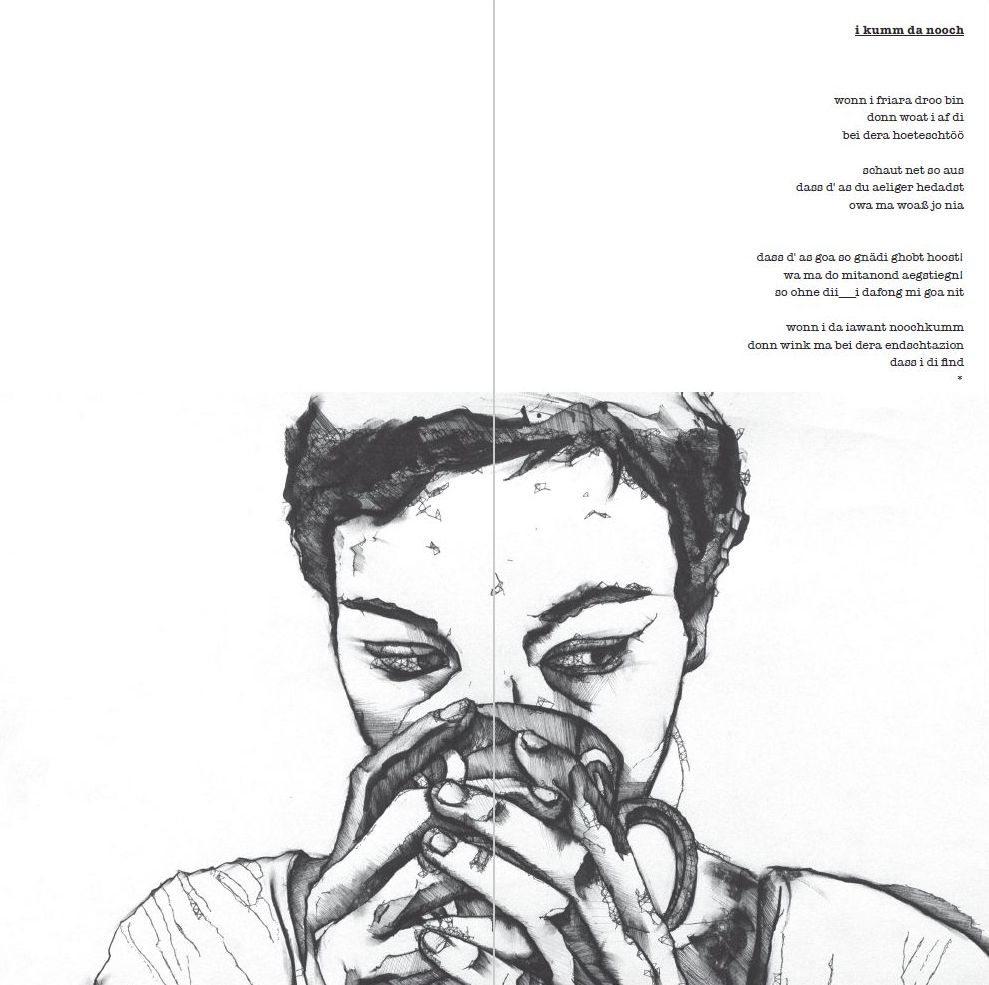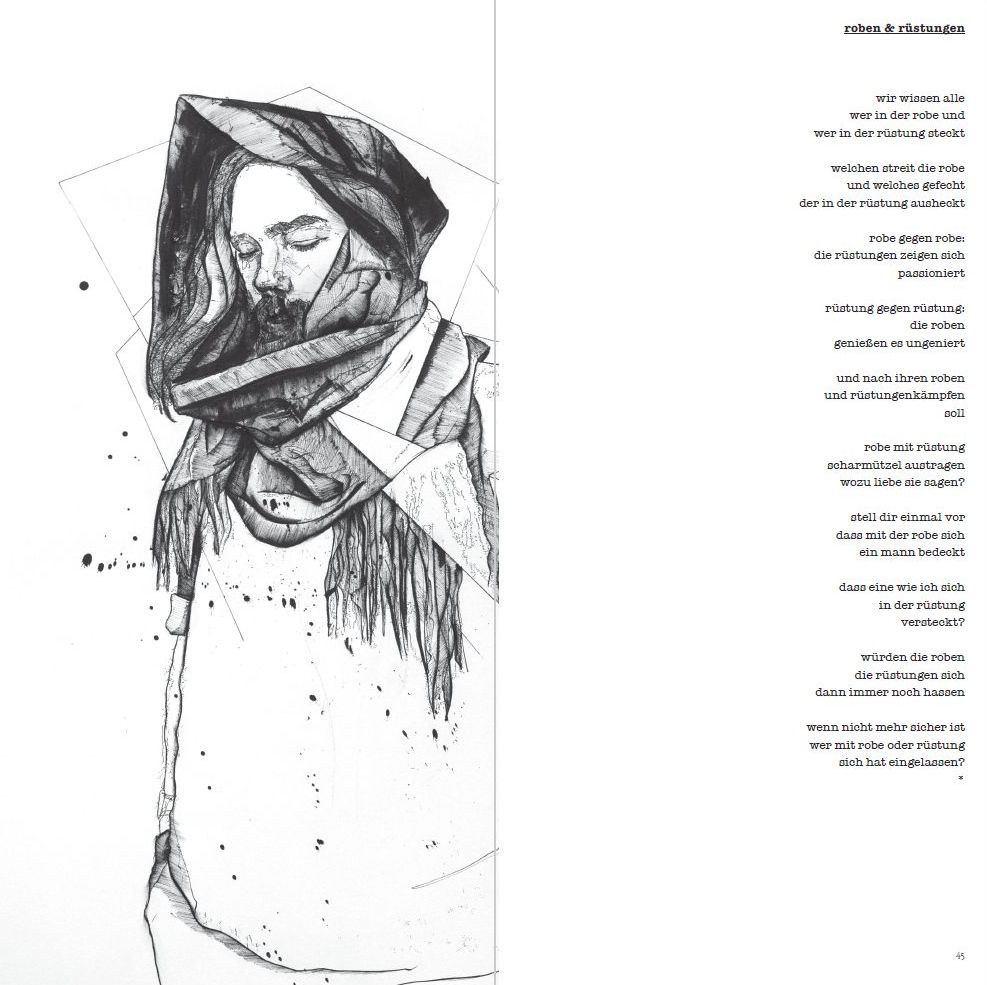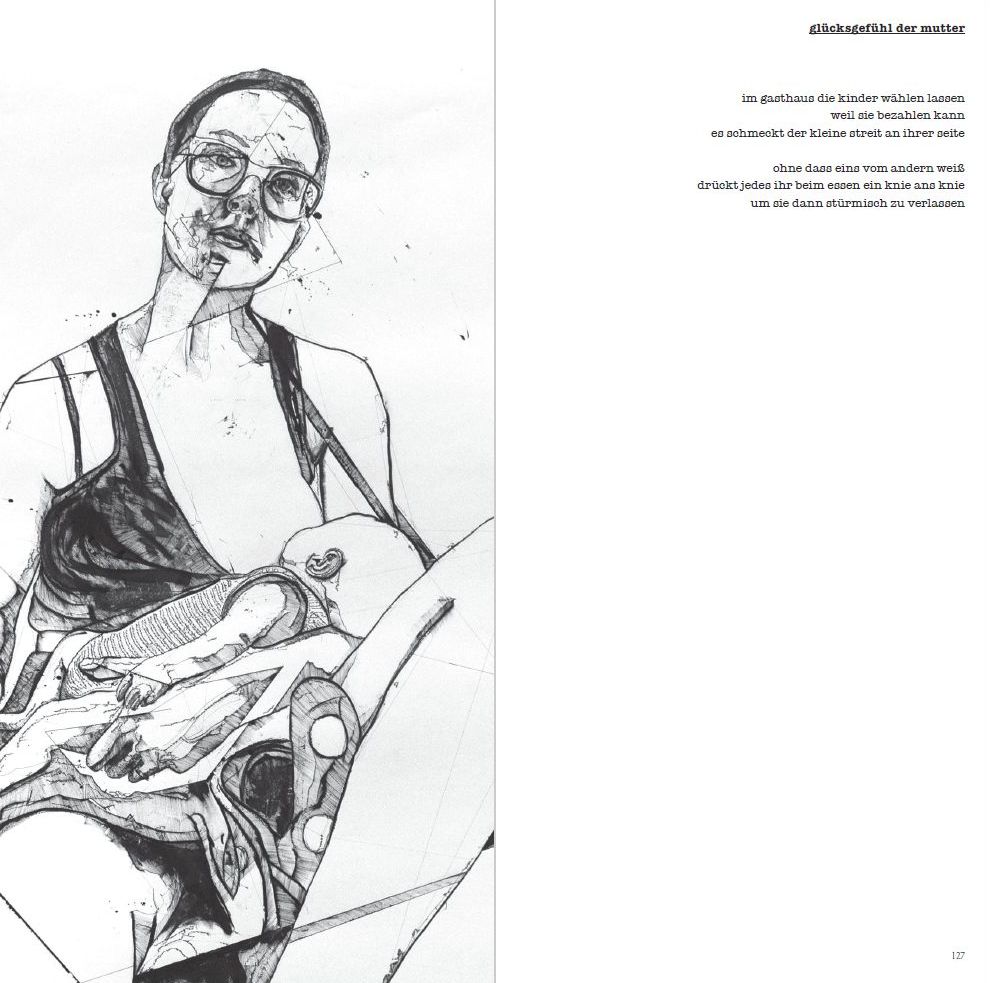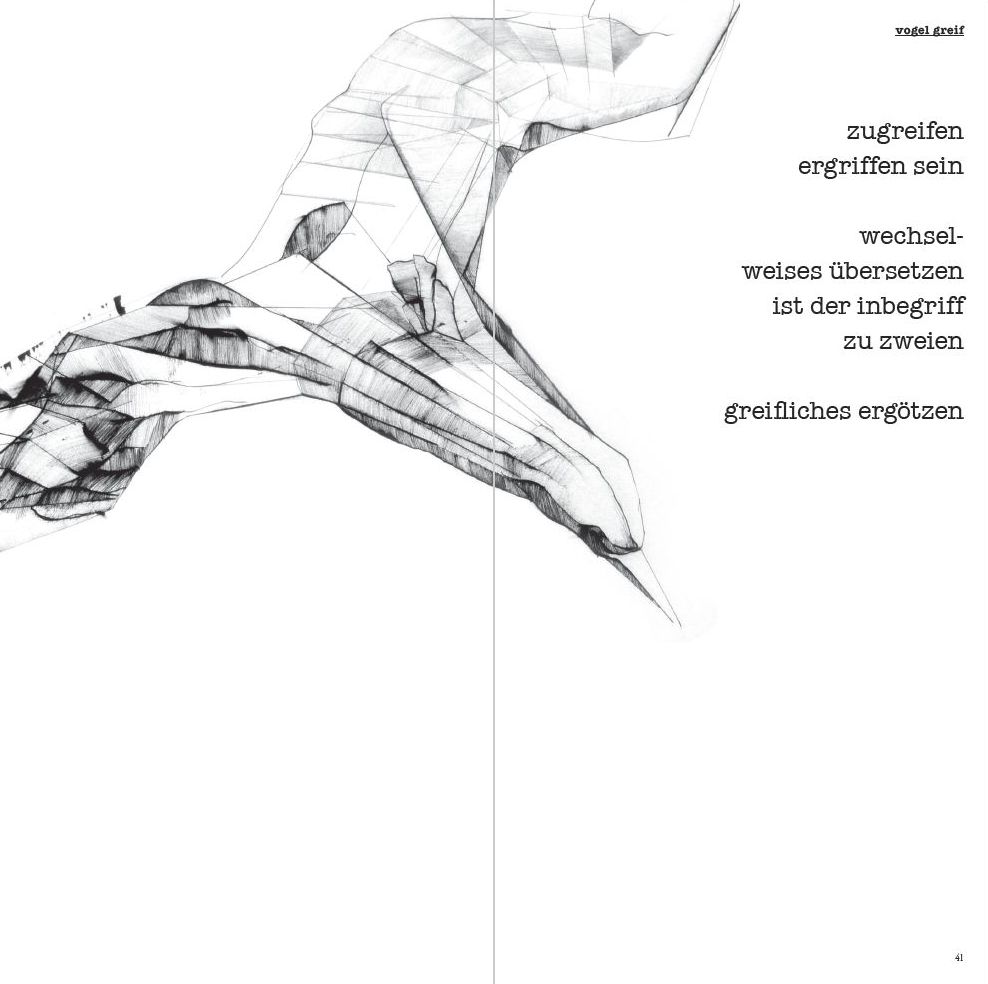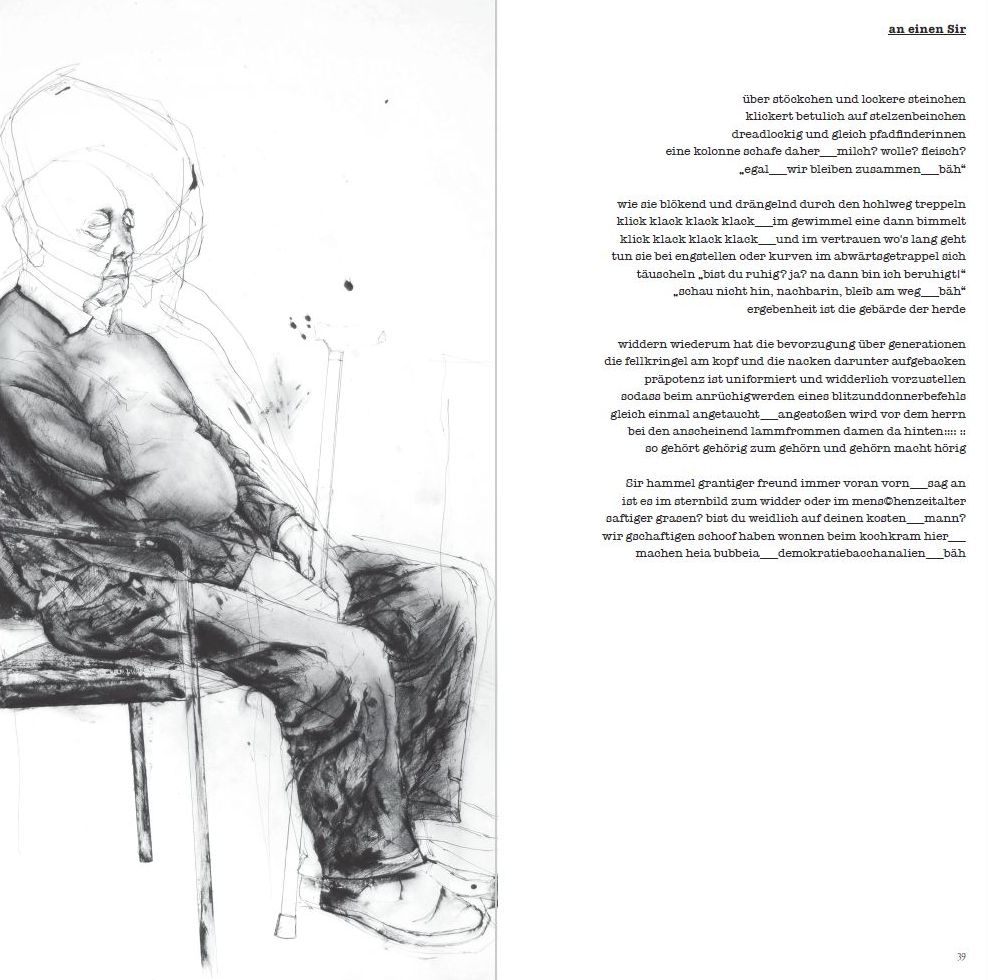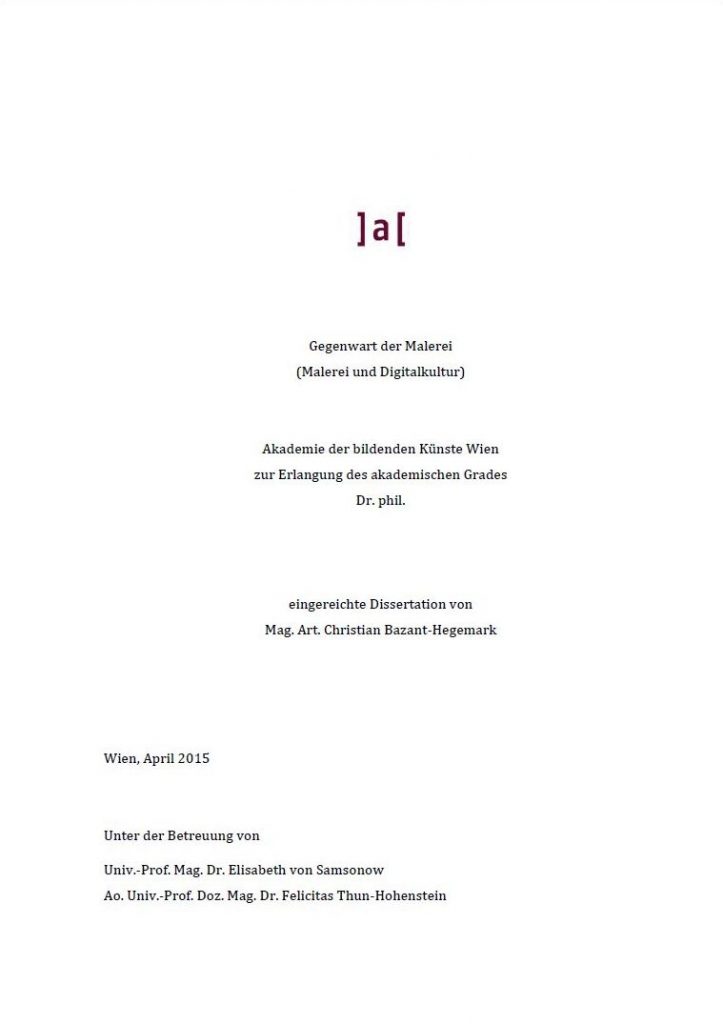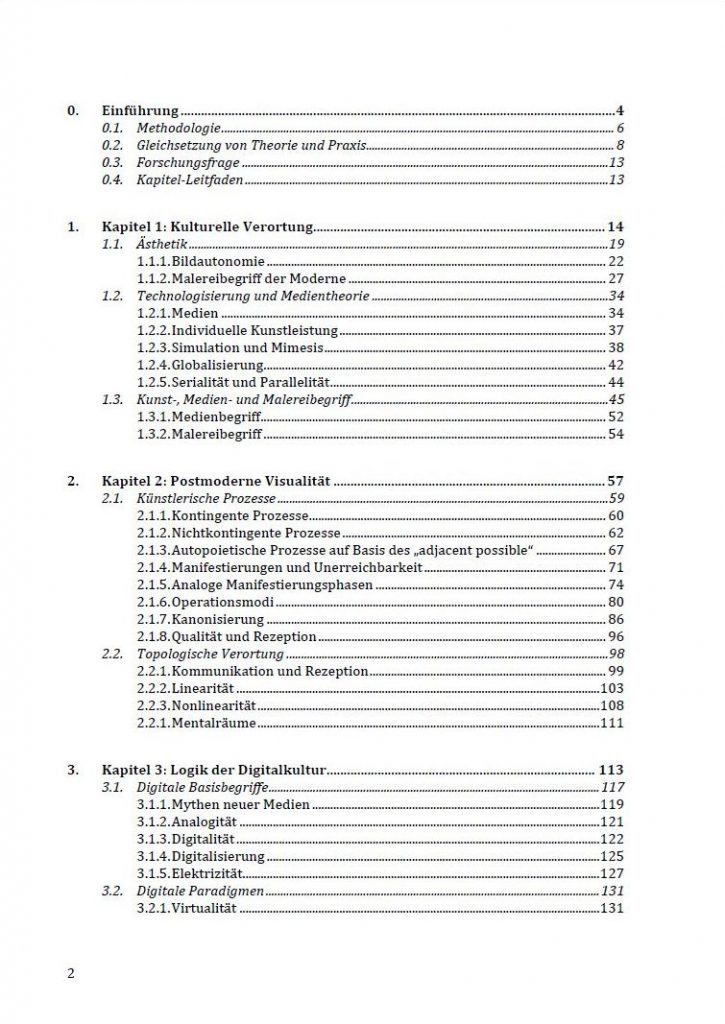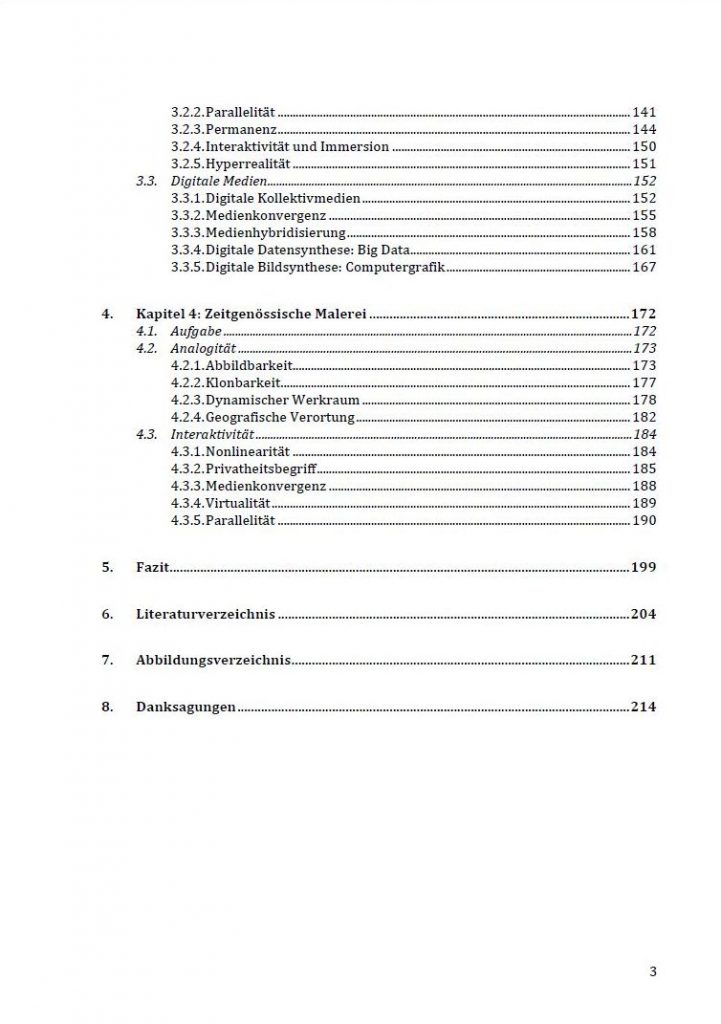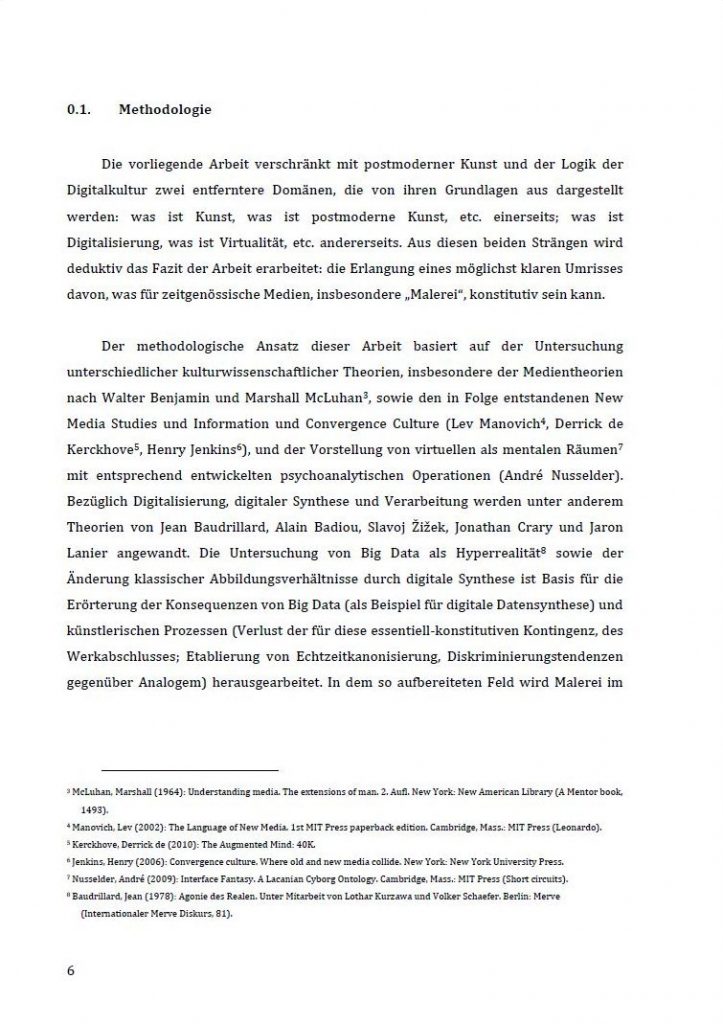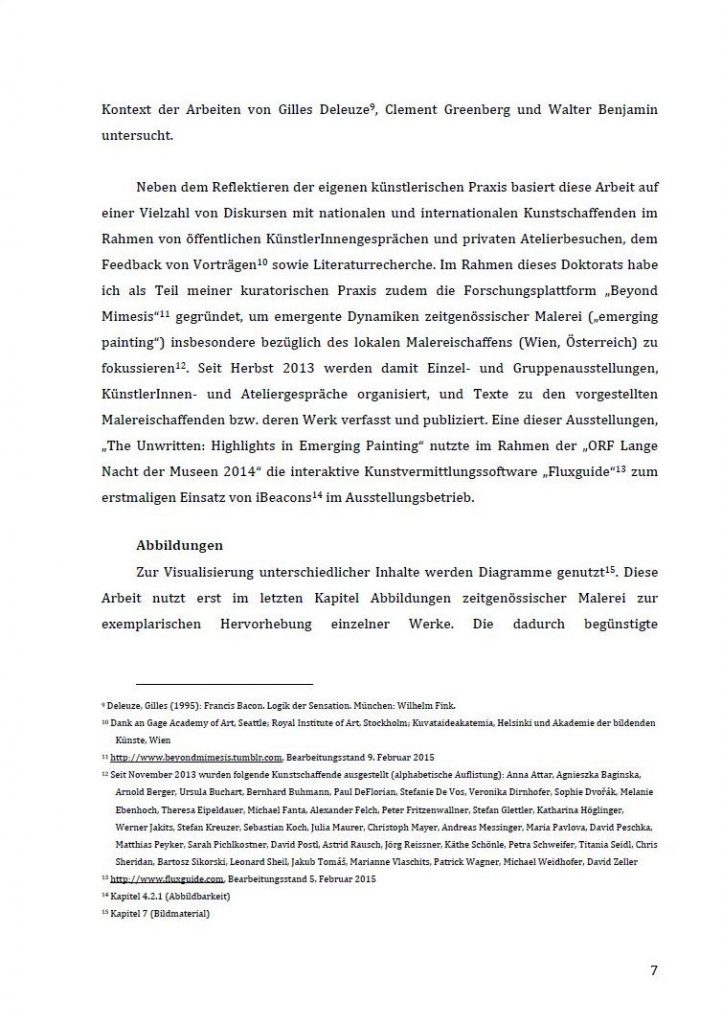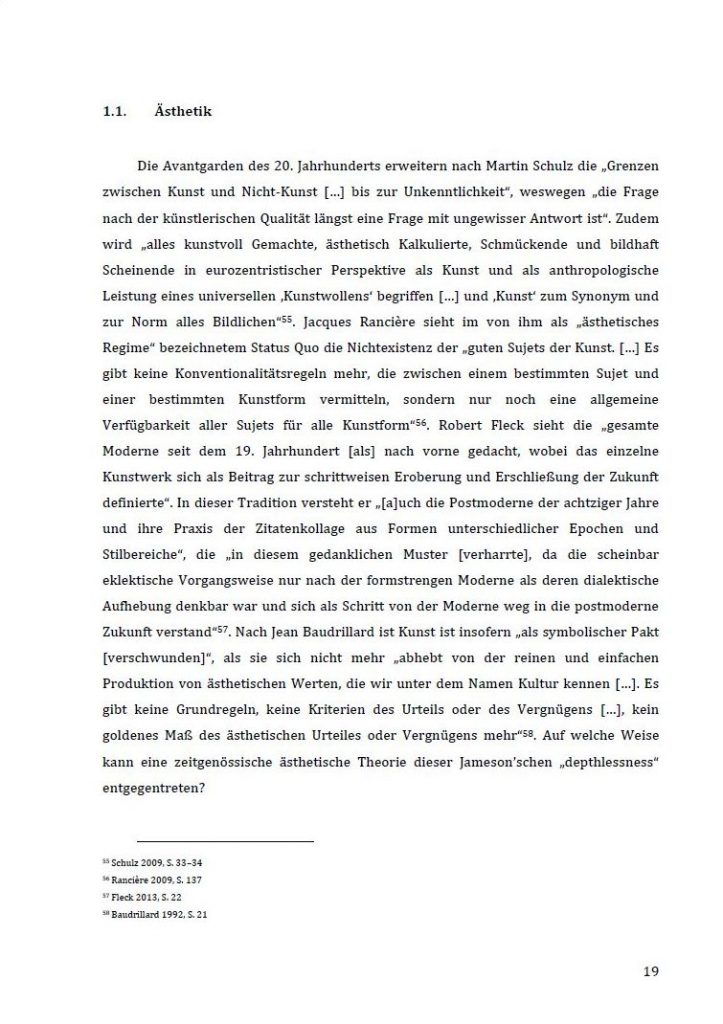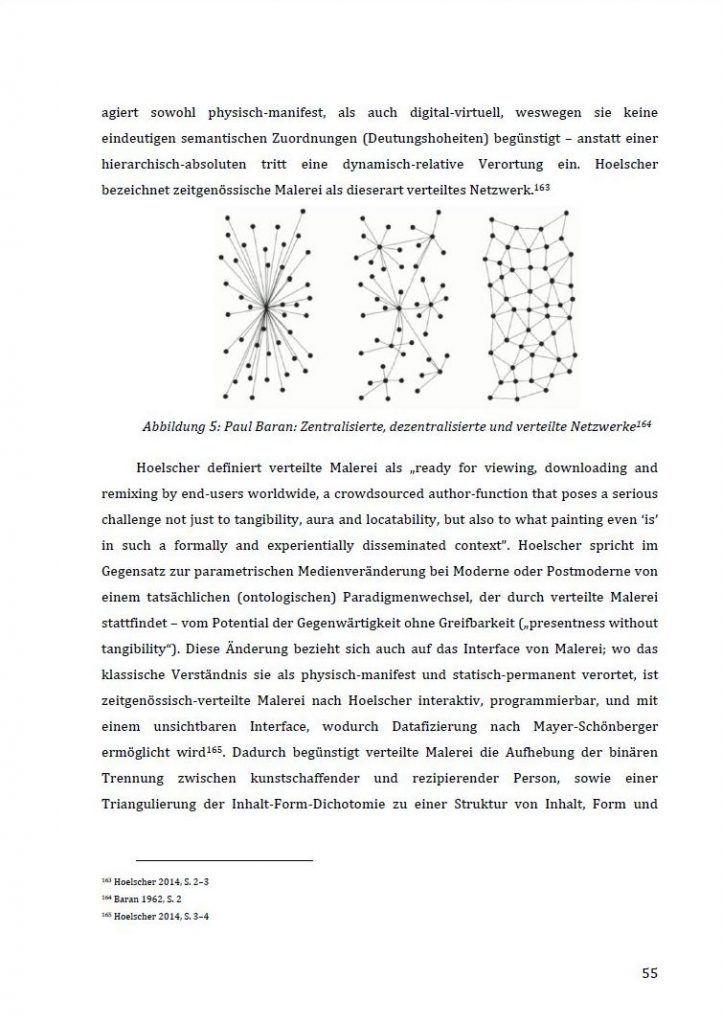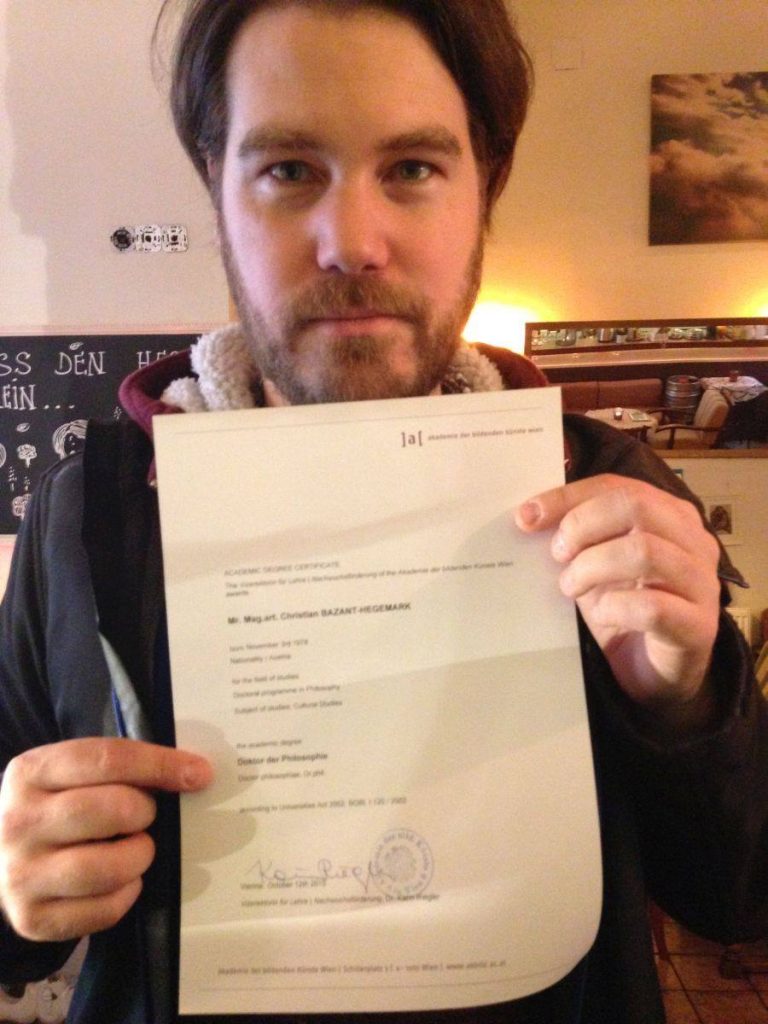“Trauma” is a 176-page half-linen hardcover book, published on the occasion of my first institutional solo show — at Museum Angerlehner in 2021.
The book includes over sixty images, as well as texts in German and English by Andrea Kopranovic, Jaqueline Scheiber (“minusgold“) and Günther Oberhollenzer. It covers works created since 2006, and also features beautiful exhibition views (by Simon Veres) as well as a portrait photo (by Milena Nowak).
The book has been designed by Mischa Guttmann, who is both a graphics designer and a sculptor; as a result, Mischa “makes objects, not just books”. In this case, a black-in-black hardcover is the base for a gravure-like hot-foil stamping, which embraces the actual book’s contents.
That content is diverse: my art is connected to lyrical fragments, and discussed in three texts. Where the exhibition lets you physically experience many of my works (whether large-scale paintings or more sensual drawings), the book adds additional layers of meaning — and can travel directly into your hands.
“Christian Bazant-Hegemark: Trauma” is published by “Verlag Bibliothek der Provinz“, and costs €30. ISBN 9-783991-260202
You can order it here.
